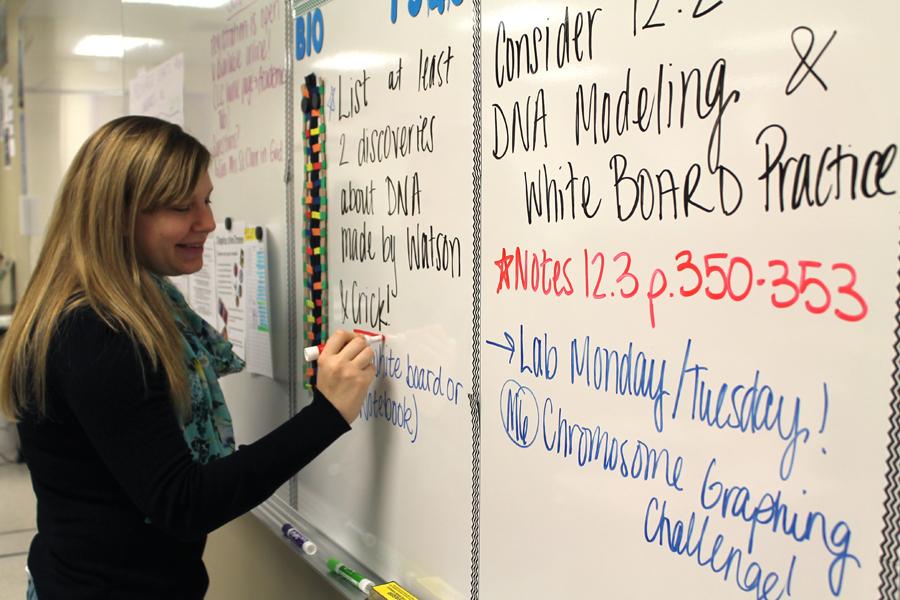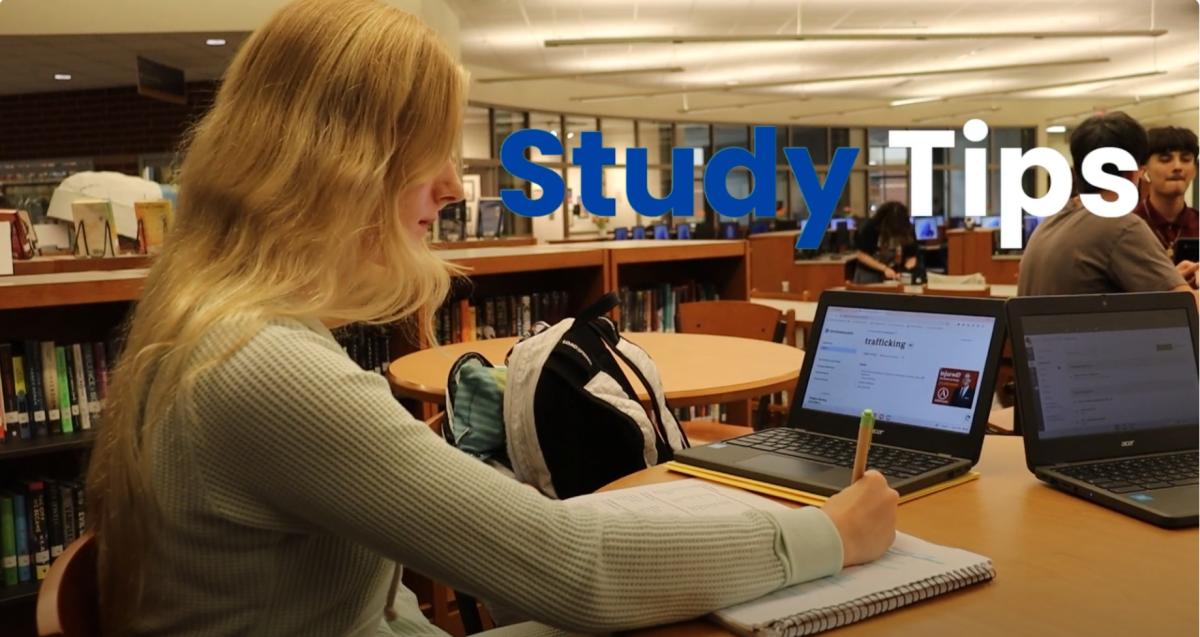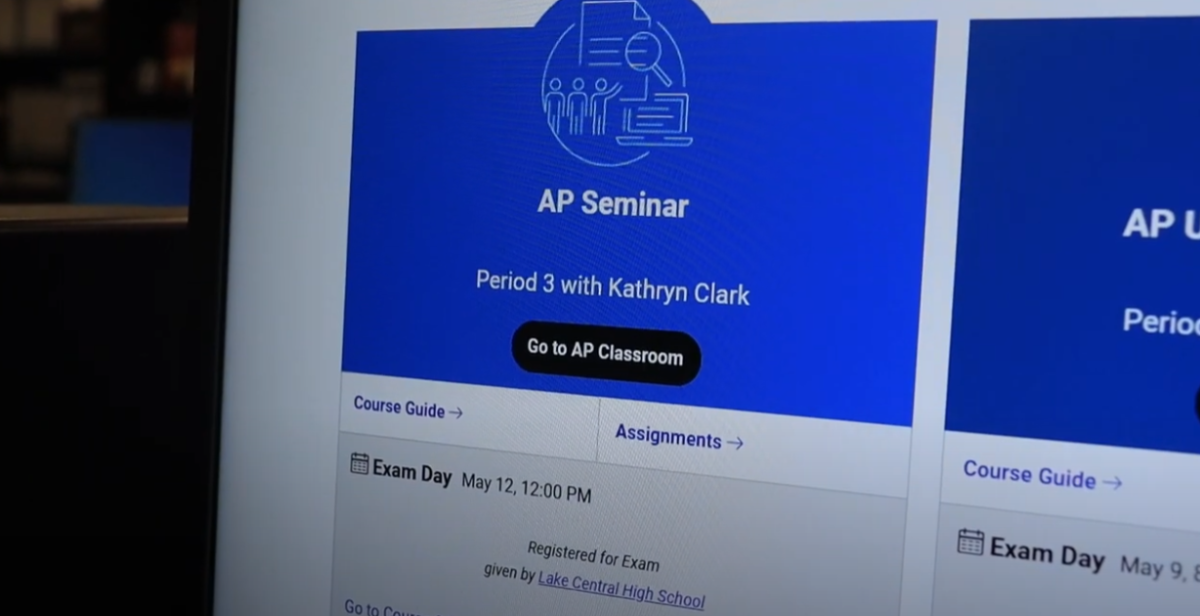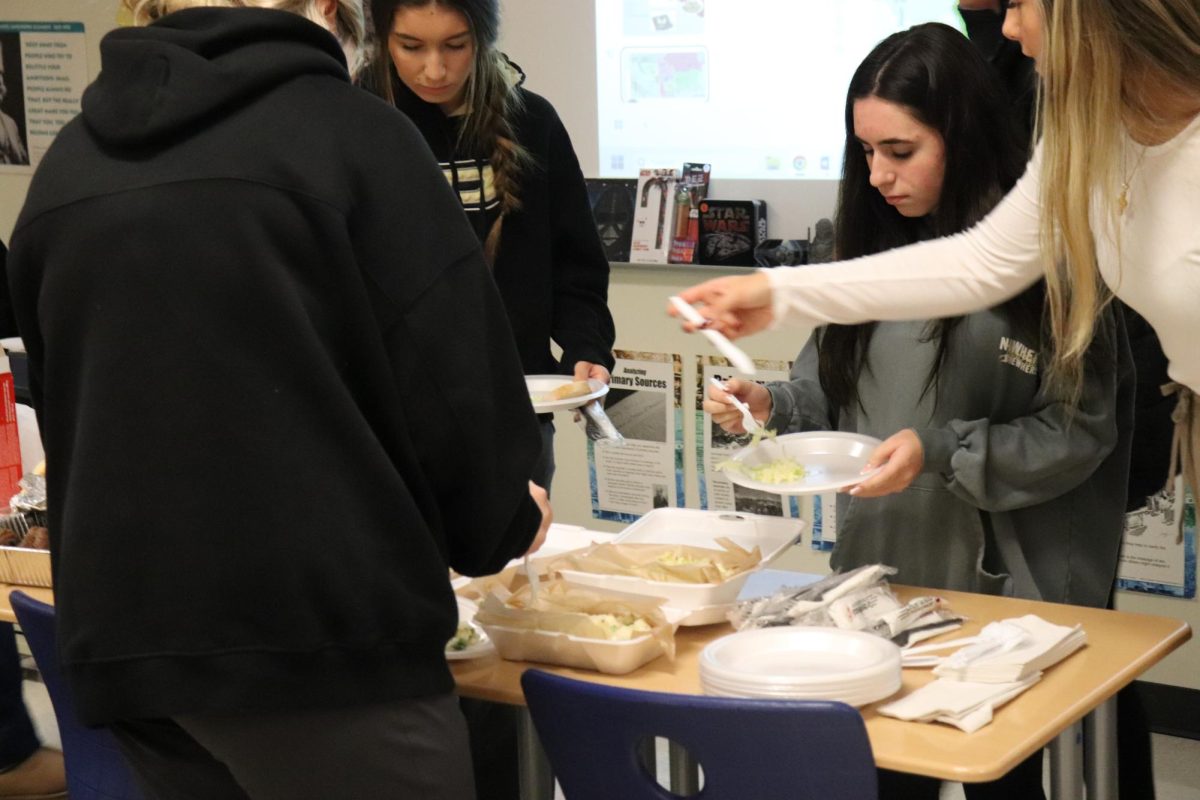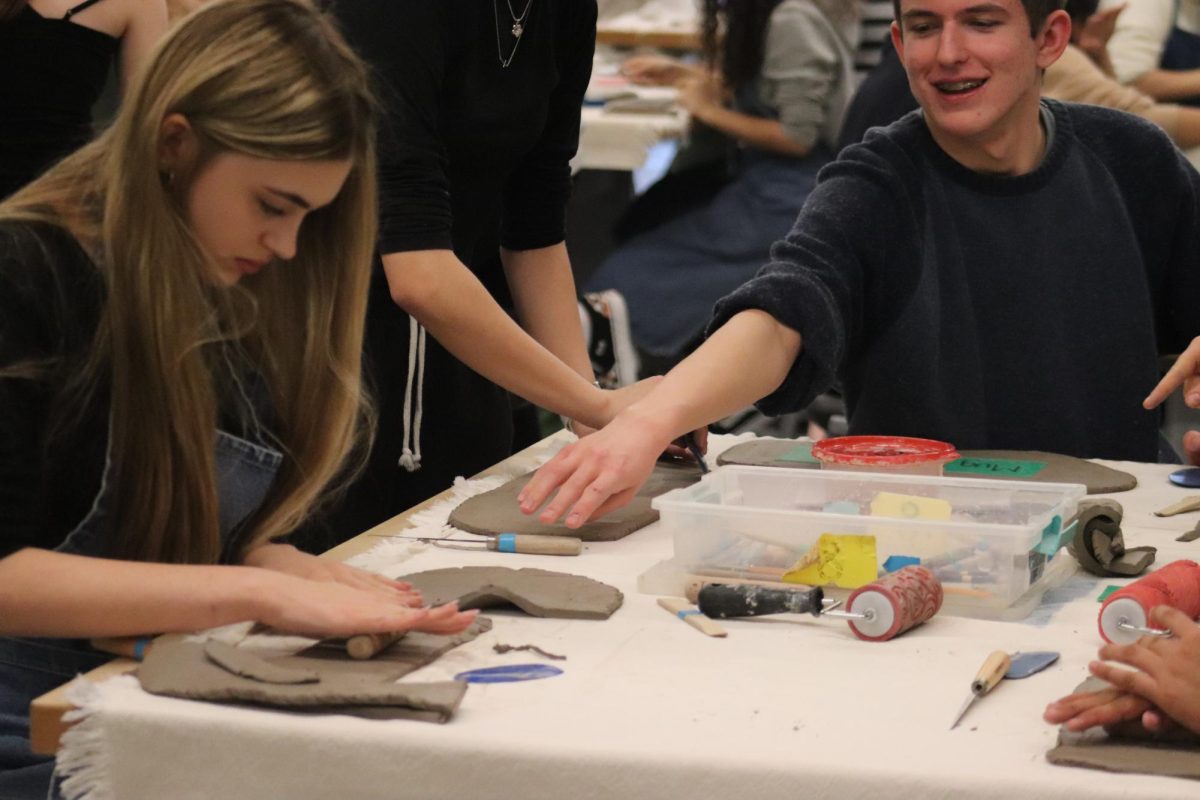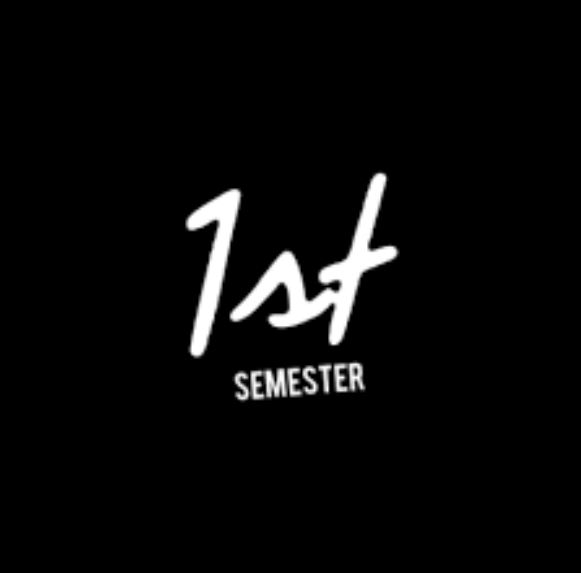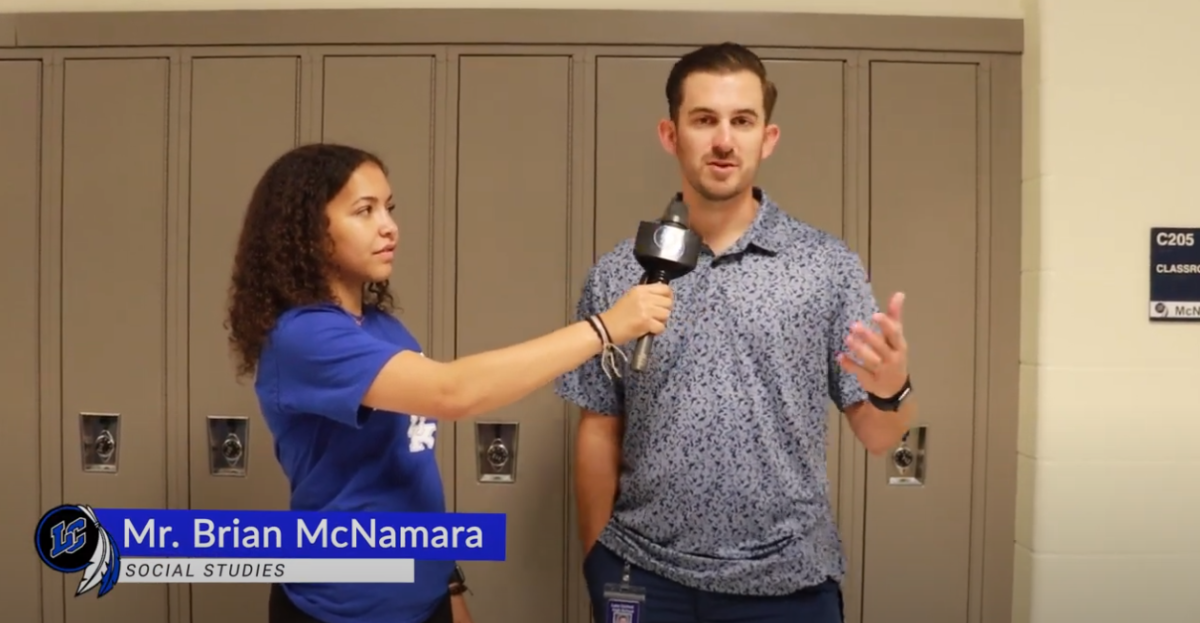Q: What made you want to teach Genetics?
A: I was asked at the end of last year if I would take it on, and it’s something that is kind of at the cutting edge of science content right now. We don’t understand that much about it in terms of exactly how our genes influence a lot of different things, specifically medical issues. I wanted to give kids an opportunity to exercise their science skills, but also learn interesting, new things that directly apply to them in a format that encourages them to start practicing organizational skills and time management skills that they’re going to need to have in college.
Q: What teaching methods had to be changed due to teaching without a textbook?
A: There is a textbook that we have, but it’s just that we don’t have enough copies to give to everybody and it’s outdated and very dry and difficult to read. I decided to look at what the kids were coming in with. Most of the kids in Genetics are either 10th, 11th or 12th graders who are interesting in continuing their science education, whether it be just to get a Core-40 or getting another science credit or they want to go into medicine or something in the science fields. I assumed that they were at least coming in with a background knowledge of traditional Mendel Genetics, and then from there, we branch out into all of these really cool other things that influence genes. Rather than having a book, it’s almost like a student-driven pace. The notes are still a traditional PowerPoint. The packet that they get comes with a practice problem lecture format that goes along with videos where I talk and work them through it. From there they have individualized practice that they can either do on their own or with a buddy and be able to have it checked with the keys and see where they stand.
Q: What are some advantages to this teaching style?
A: If you’re somebody who works really hard in school to not have homework outside of school, then this is great because you can get your Genetics done and then work on something else in here. All of the content is on Canvas, so we use Chromebooks as our major content delivery system. That allows me to move around the room and individually help wherever I need to.
Q: What are some disadvantages to this teaching environment?
A: Unless I directly approach kids, it’s sometimes hard to figure out where they are. Canvas lets me track their activity, so I can see if someone hasn’t been on there at all. In terms of their understanding, unless I go to them, they’re not going to come to me most of the time with questions. There are some that do, and there are some kids who will spend the whole day up at the front of the board with me working out problems. That’s awesome, but for the kids who struggle I think it doesn’t enable them to communicate with me as well as they maybe would in a traditional setting. It’s also difficult because there is a minimum pace because the test and quiz dates all have to be the same. Otherwise the info on them would leak out. Trying to encourage kids to understand that minimum pace, even though I’m not telling them today you have to do this, this and this is something that’s challenging, but I think that it’s a challenge that you face in the real world all the time.
Q: Have you noticed any differences between first and second semester?
A: I have a second hour and seventh hour, and that was true last semester too. What I’ve noticed is that the classes that communicate more, not just with each other, but with me learn more. I try to facilitate that, but this semester I only have 11 kids in seventh hour. The smaller the number of kids, the harder it is to get them to communicate with each other and to communicate with me, so in terms of their outlook and their outreach in the content, it is different. I feel more comfortable second semester already because I’m not making everything again. I’m just tweaking little things and trying to figure out where I can add stuff.



